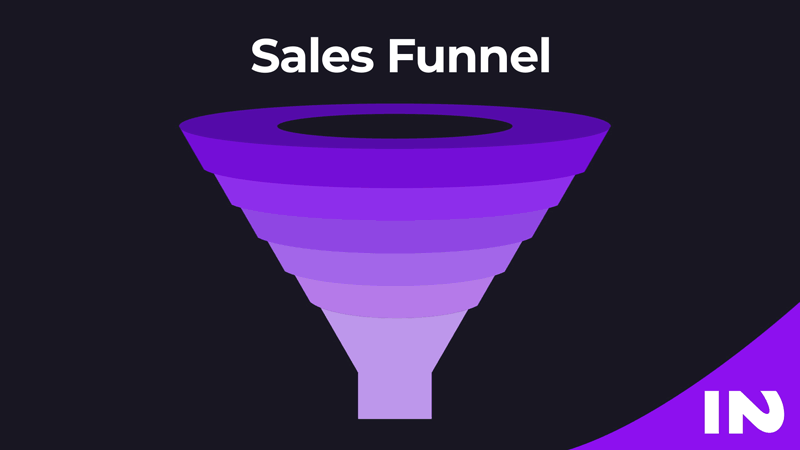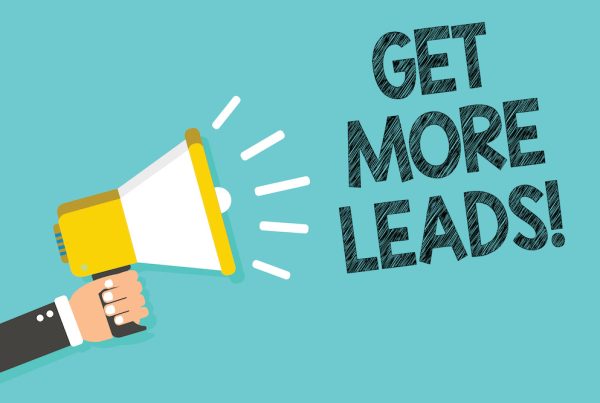Did you know that 79% of marketing leads never convert into sales due to a lack of lead nurturing? This is often due to gaps in a proper sales funnel strategy. By understanding each stage of the sales funnel, businesses can craft strategies that guide prospects smoothly through this journey, increasing the likelihood of conversion and long-term customer relationships. In this article, we go through what a sales funnel is, the stages of a sales funnel, and marketing and sales tactics that will help you convert your prospects into paying customers.
What is a Sales Funnel?
A sales funnel is a visual representation of the steps a prospect goes through before making a purchase. It is called a funnel because it starts wide at the top, where many potential customers enter, and narrows down towards the bottom, where only a fraction of those prospects convert into paying customers. The funnel is divided into several stages, each representing a different phase of the buyer’s journey.
Why is the Sales Funnel Important?
Understanding the sales funnel is crucial for several reasons:
- Targeted Marketing: By knowing which stage a prospect is in, businesses can tailor their marketing efforts to address specific needs and concerns, making the messaging more relevant and effective.
- Improved Conversion Rates: A well-optimized sales funnel helps guide prospects through the buying process, reducing drop-off rates and increasing the likelihood of conversion.
- Resource Allocation: Businesses can allocate resources more efficiently by focusing on strategies that are most effective at each stage of the funnel.
- Customer Insights: Analyzing the funnel provides valuable insights into customer behavior and preferences, which can inform future marketing and sales strategies.
 Stages of the Sales Funnel
Stages of the Sales Funnel
The sales funnel typically consists of six main stages: Awareness, Interest, Consideration, Intent, Evaluation, and Purchase. Each stage requires specific marketing and sales strategies to move prospects closer to conversion.
1. Awareness
What is Awareness?
The awareness stage is where potential customers first become aware of your brand or product. They might not even realize they have a problem that needs solving. Your goal at this stage is to attract their attention and introduce your brand in a way that resonates with them.
Marketing and Sales Strategies:
- Content Marketing: Create valuable content such as blog posts, infographics, videos, and social media posts that address common pain points and interests of your target audience. This content should be informative, engaging, and designed to capture attention.
- SEO (Search Engine Optimization): Optimize your website and content for search engines to ensure that your brand appears in search results when potential customers look for information related to your products or services. Use relevant keywords and high-quality backlinks to improve your search rankings.
- Social Media Advertising: Utilize platforms like Facebook, Instagram, LinkedIn, and Twitter to run targeted ads that reach your ideal audience based on demographics, interests, and behaviors. Social media ads can effectively increase brand visibility and attract new prospects.
- Public Relations: Get featured in reputable publications, podcasts, and industry blogs to increase your brand’s visibility and credibility. Positive media coverage can significantly boost awareness and establish your brand as an authority in your field.
2. Interest
What is Interest?
In the interest stage, potential customers are aware of your brand and are now seeking more information. They may be exploring different solutions and evaluating how your product or service can address their needs.
Marketing and Sales Strategies:
- Educational Content: Offer in-depth resources such as case studies, how-to guides, and webinars that provide valuable insights and demonstrate your expertise. This content should help prospects understand the benefits of your product or service.
- Lead Magnets: Create downloadable resources like eBooks, templates, and reports that require users to provide their contact information to access. This allows you to capture leads and continue nurturing them.
- Social Proof: Share customer testimonials, reviews, and success stories to build credibility and trust. Potential customers are more likely to engage with your brand if they see that others have had positive experiences.
3. Consideration
What is Consideration?
At the consideration stage, potential customers are comparing different options and evaluating which solution best meets their needs. They are more serious about making a purchase and are looking for detailed information to make an informed decision.
Marketing and Sales Strategies:
- Product Demos: Offer live or recorded demos of your product or service to showcase its features and benefits. Demos provide a hands-on experience that can help prospects understand how your product works.
- Free Trials: Provide free trials or samples so potential customers can experience your product firsthand. A trial period allows prospects to test the product’s effectiveness without any financial commitment.
- Comparative Content: Create comparison guides that highlight the differences between your offerings and those of your competitors. This content should be objective and focus on the unique value your product provides.
4. Intent
What is Intent?
In the intent stage, potential customers are ready to make a purchase. They have a clear understanding of their needs and how your product or service can meet them. They may be seeking final confirmations before committing.
Marketing and Sales Strategies:
- Special Offers: Provide limited-time discounts, promotions, or bonuses to encourage prospects to take action. Exclusive offers can create a sense of urgency and motivate prospects to make a purchase.
- Customer Reviews and Testimonials: Highlight positive feedback from satisfied customers to reinforce the value of your product or service. Authentic reviews can help alleviate any last-minute doubts prospects may have.
- Detailed Product Information: Ensure your website has comprehensive product descriptions, FAQs, and detailed specifications. Providing thorough information helps prospects feel confident in their decision.
5. Evaluation
What is Evaluation?
During the evaluation stage, potential customers are making their final decision. They are weighing the pros and cons of your product or service and may be seeking validation from others before making the purchase.
Marketing and Sales Strategies:
- Free Consultations: Offer free consultations to help prospects understand how your product or service can specifically benefit them. Personal consultations can address individual concerns and provide tailored solutions.
- ROI Calculators: Provide tools that allow prospects to calculate the potential return on investment (ROI) they can achieve with your solution. ROI calculators can demonstrate the tangible benefits of your product.
- Detailed Comparisons: Create detailed comparison charts that clearly outline the advantages of your product or service over competitors. Highlighting unique features and benefits can tip the scales in your favor.
 6. Purchase
6. Purchase
What is Purchase?
The purchase stage is when the prospect finally makes the decision to buy your product or service. This is the culmination of all the efforts put into the previous stages of the sales funnel.
Marketing and Sales Strategies:
- Simplified Checkout Process: Ensure your checkout process is smooth, user-friendly, and secure to minimize any friction during the purchase. A streamlined process reduces cart abandonment rates.
- Multiple Payment Options: Offer a variety of payment options to cater to different customer preferences. Flexibility in payment methods can accommodate a wider range of customers.
- Post-Purchase Follow-Up: Send confirmation emails and follow-up messages to thank customers for their purchase and provide any necessary information. Post-purchase communication helps maintain a positive relationship.
Integrating Lead Generation, Lead Nurturing, and Sales Strategies
To maximize the effectiveness of your sales funnel, it’s essential to integrate lead generation, lead nurturing, and sales strategies seamlessly across all stages. Here are some key points to consider:
Consistent Messaging
Ensure that your messaging is consistent across all channels and stages of the funnel. This consistency helps build trust and reinforces your brand identity. When your audience encounters a uniform message and tone, it fosters familiarity and reliability, making them more likely to engage with your brand.
Data-Driven Decisions
Use data and analytics to track the performance of your lead generation and nurturing efforts. This approach allows you to identify what works and what needs improvement. By leveraging insights from your data, you can make informed decisions that enhance the effectiveness of your marketing strategies.
Personalization
Personalize your interactions with prospects and customers based on their behavior, preferences, and stage in the funnel. Tailoring your communications creates a more relevant experience, increasing the likelihood of engagement and conversion. Personalization shows that you understand and value your audience, fostering stronger relationships.
Automation
Utilize marketing automation tools to streamline your lead generation and nurturing processes. Automation can help you manage and scale your efforts more efficiently. By automating repetitive tasks, you free up time to focus on strategic initiatives, ensuring that your marketing operations run smoothly and effectively.
Continuous Improvement
Continuously evaluate and optimize your sales funnel. Regularly review your strategies, gather feedback, and make adjustments to improve conversion rates. An iterative approach ensures that your sales funnel remains effective and responsive to changing market conditions and customer needs.
What’s Next?
Understanding and effectively managing every stage of the sales funnel is crucial for driving successful marketing campaigns and converting prospects into loyal customers. By implementing targeted lead generation, lead nurturing, and sales strategies at each stage, you can guide potential customers through the funnel and maximize your chances of closing the sale. Remember, the sales funnel is not a one-size-fits-all model. It requires ongoing refinement and adaptation to meet the unique needs of your audience and industry. If you have any questions about generating new leads, don’t hesitate to contact our team of experts.
About IN2communications
IN2communications is an award-winning digital marketing and web design agency helping hundreds of B2B organizations create awareness, boost consideration rates and generate sales leads.
Our awesome team provides experienced expertise in the following areas: Creative Strategy, B2B Campaigns, Web Development, Video Production, Social Media, Paid Advertising, SEO, Email Campaigns, Blogging, Presentations, Webinars and remarkable Content Creation.




